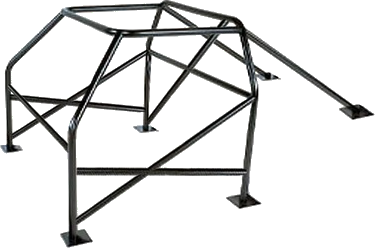
Most racing organizations require at least the most basic of safety features, which includes the roll cage. Although originally designed to keep a driver safe in the event of a roll-over or flip, they can also improve the handling of the vehicle by making the chassis more rigid, at least when properly worked into the chassis design. Most forms of motorsports require a roll cage in the rules for safety.
Safety
For safety, the structure of the roll cage is designed with hollow tubing welded together at strong angles which won't give way to heavy impacts, except in some locations to reduce the effects on the driver and passengers. The thickness of the tubing and the tube redundancy depends on the racing series rules, or the builder's intentions.
Handling & Rigidity
For handling and chassis rigidity improvement, the roll cage needs to be welded to the rest of the chassis in as many locations as possible, so the forces applied to the vehicle can get to the roll cage quickly. Sometimes extra tubing can be used in key locations to improve rigidity, without helping the safety qualities of the roll cage.
A stiffer chassis keeps the forces directed to the suspension system, so that the energy is dispersed as evenly as possible, and the vehicle's movements are made more predictable. A bending chassis takes away from wheel travel, making the vehicle less responsive to steering inputs.
- Roll Bars
- Scaffolding
